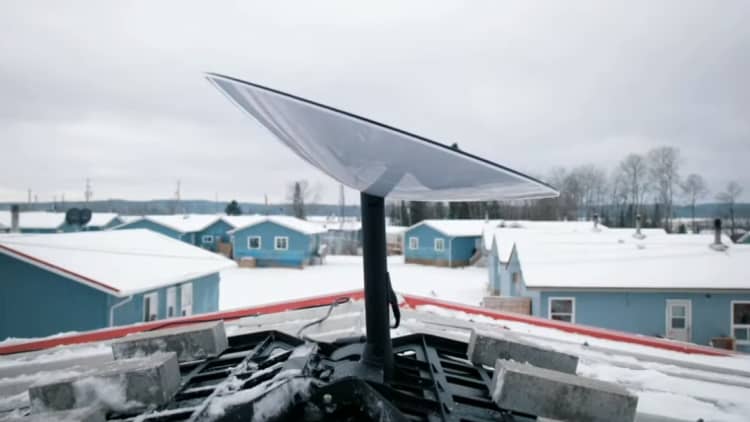PARIS — Elon Musk's SpaceX is no longer absorbing the cost of the Starlink antennas it sells with its satellite internet service, a company executive said Wednesday, a key step to the company improving its profitability.
"We were subsidizing terminals, but we've been iterating on our terminal production so much that we're no longer subsidizing terminals, which is a good place to be," Jonathan Hofeller, SpaceX vice president of Starlink and commercial sales, said during a panel at the World Satellite Business Week conference.
SpaceX sells consumer Starlink antennas, also known as user terminals, for $599 each. For more demanding Starlink customers — such as mobile, maritime or aviation users — SpaceX sells antennas with its service in a range between $2,500 and $150,000 each.
When SpaceX first began selling its Starlink service, company leadership said the terminals cost about $3,000 each to manufacture. The company improved that to about $1,300 per terminal by early 2021. Hofeller's comments Wednesday indicate the terminals now cost less than $600 each to make, mass production savings that Hofeller credited as "one of our keys to success."
SpaceX President and Chief Operating Officer Gwynne Shotwell said earlier this year that Starlink "had a cash flow positive quarter" in 2022. The overall company reportedly turned a profit in the first quarter of 2023.
Although it was founded more than two decades ago and valued at about $150 billion, SpaceX's businesses of rockets, spacecraft and satellites are capital intensive. In 2021, Musk said Starlink was going through "a deep chasm of negative cash flow" before it could become "financially viable."
The company last provided an update on its global Starlink user base in May, when it said it had about 1.5 million customers. Hofeller did not specify what that total is now but said Starlink is "well over" that 1.5 million mark. The figure includes both consumer and enterprise customers around the world, which Hofeller said the service aims to "grow to hopefully millions and millions."
To date, SpaceX has launched over 5,000 Starlink satellites and counting.
"We're going strong, we're launching twice a week now — which is insane," Hofeller said.
Earlier on Wednesday, European satellite operator SES announced a partnership with Starlink to jointly sell their communications services to cruise ships, a market both companies currently serve. SES CEO Ruy Pinto said the arrangement is one that the companies expect to build upon with later market offerings.



